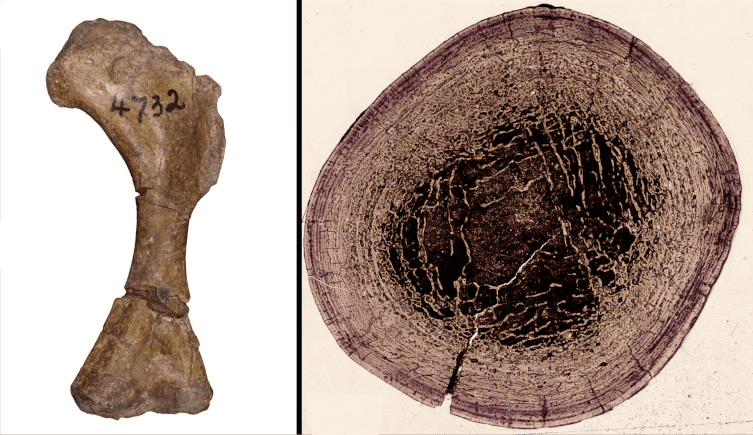While its relatives were making the earth shake, one South African sauropod barely made a ripple with a body mass of around just 75 kilograms (165 pounds). That wouldn’t even put it in the top weight class for women’s wrestling at the Olympics, let alone men’s. If it was an asteroid we might say it weighed as much as 50 (male) ferrets.
A new analysis has revealed a fossil previously thought to be the arm of a young Massospondylus carinatus is actually the bone of a fully grown adult and most likely comes from a previously unknown species of sauropod.
Sauropods famously include the largest land animals of all time, including giants like Mamenchisaurus, Diplodocus, Titanosaur and the back from categorization-exile Brontosaurus. However, like most animal families, they didn’t start out big. Instead, the first sauropodomorphs weighed less than 15 kilograms (33 pounds) and are thought to have been omnivorous.
By the Jurassic some members of the family were giants, but others maintained that size isn’t everything. The study of the humerus found in South Africa’s Elliot Formation reveals what a new paper calls the smallest sauropomorph “ever reported from a Jurassic stratum.”
There are usually many more examples of small species than large ones, but if that was the case for the sauropods then the small ones didn’t fossilize well. From every continent, we have remains of members of the family that would have pushed 90 tonnes, which is around 15 bull African elephants. The smaller end of the family is thought to have been represented in the Jurassic by Massospondylus carinatus, weighing in at around 550 kilograms (1,200 pounds), typical for a modern cow.
It’s likely other herbivorous dinosaur families were just better at being small, and those long necks didn’t provide the same advantage at this scale. Nevertheless, it seems some petit sauropods found a niche.
Dr Kimberley Chapelle of the American Museum of Natural History and co-authors studied a bone labeled BP/1/4732. This was, they conclude, the humerus (front lower leg bone) of a bipedal sauropod that would have weighed a precisely estimated 73.35 kg. Rather than being from a juvenile, as previously assumed, the bone had stopped growing well before death, indicating it was from an adult.
Eleven “lines of arrested growth” reveal the owner of the bone had long since stopped growing
Image Credit: Chapelle et al./Royal Society Open Science
“Until now, we didn’t know that early sauropodomorphs could get this small, so the smallest skeletons were assumed to be babies,” Chapelle told the Natural History Museum.
We can’t know whether BP/1/4732 came from an individual typical of the species, or it had some form of dwarfism. However, with M. carinatus usually weighing about eight times as much, this is clearly a different species. The shape of the bone also does not match any named sauropod.
The only Adeopapposaurus whose weight we have been able to estimate was smaller still (55 kilograms) but that is thought to have been an immature individual, and the adults were probably much heavier than BP/1/4732’s owner.
It will take more than one leg bone to allow the new species to be described and named, but at least now we know the bones of a small sauropod are out there, waiting to be found. Chapelle thinks there may be other bones wrongly classified as juveniles that may deserve reassessment.
The study is Open Access In Royal Society Open Science
Source Link: New Smallest Jurassic Sauropod Weighed Less Than Most Humans
